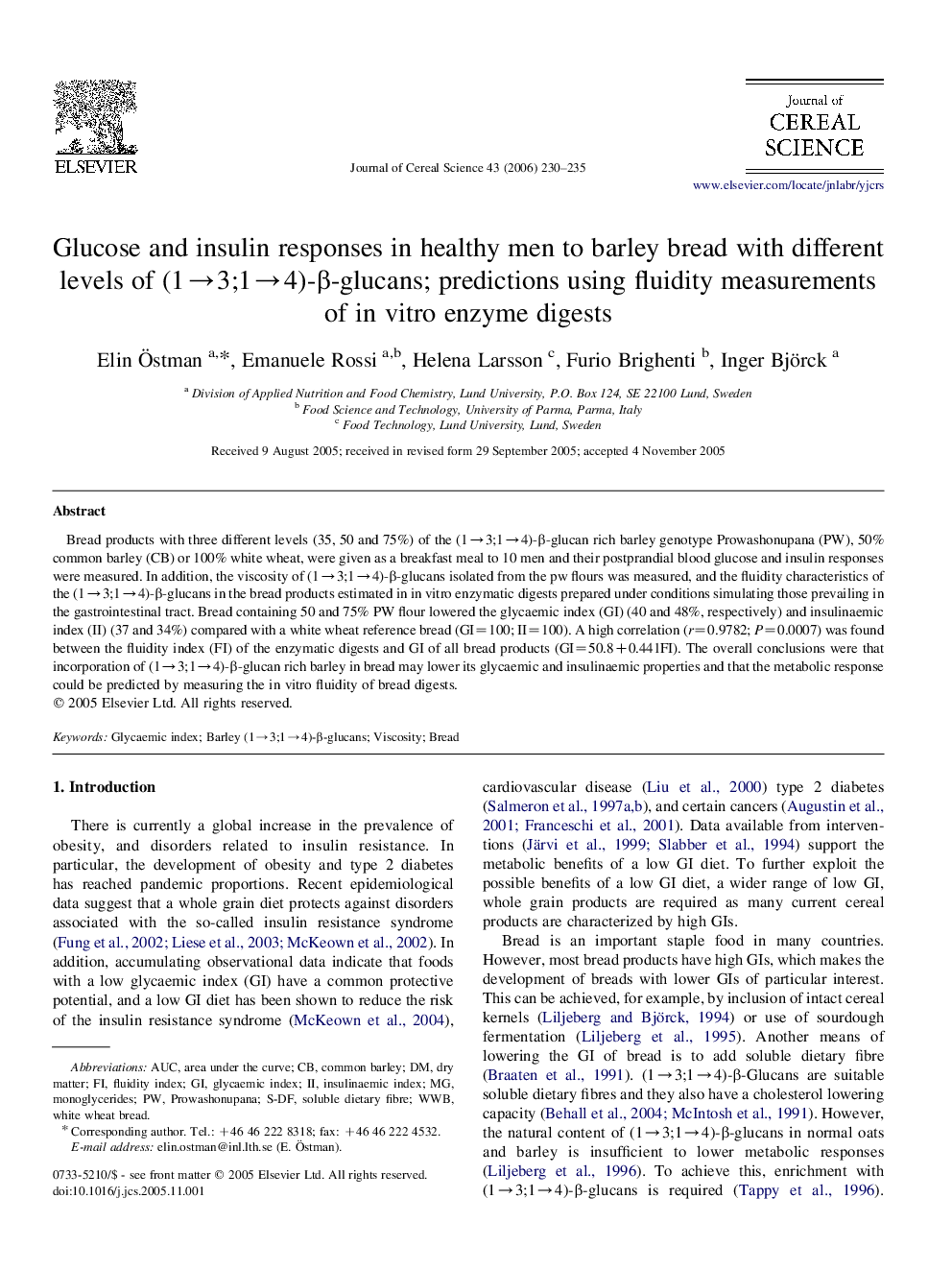| Article ID | Journal | Published Year | Pages | File Type |
|---|---|---|---|---|
| 4516903 | Journal of Cereal Science | 2006 | 6 Pages |
Bread products with three different levels (35, 50 and 75%) of the (1→3;1→4)-β-glucan rich barley genotype Prowashonupana (PW), 50% common barley (CB) or 100% white wheat, were given as a breakfast meal to 10 men and their postprandial blood glucose and insulin responses were measured. In addition, the viscosity of (1→3;1→4)-β-glucans isolated from the pw flours was measured, and the fluidity characteristics of the (1→3;1→4)-β-glucans in the bread products estimated in in vitro enzymatic digests prepared under conditions simulating those prevailing in the gastrointestinal tract. Bread containing 50 and 75% PW flour lowered the glycaemic index (GI) (40 and 48%, respectively) and insulinaemic index (II) (37 and 34%) compared with a white wheat reference bread (GI=100; II=100). A high correlation (r=0.9782; P=0.0007) was found between the fluidity index (FI) of the enzymatic digests and GI of all bread products (GI=50.8+0.441FI). The overall conclusions were that incorporation of (1→3;1→4)-β-glucan rich barley in bread may lower its glycaemic and insulinaemic properties and that the metabolic response could be predicted by measuring the in vitro fluidity of bread digests.
